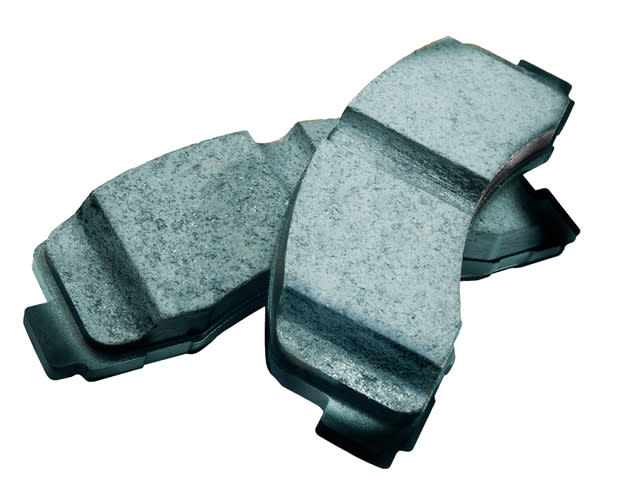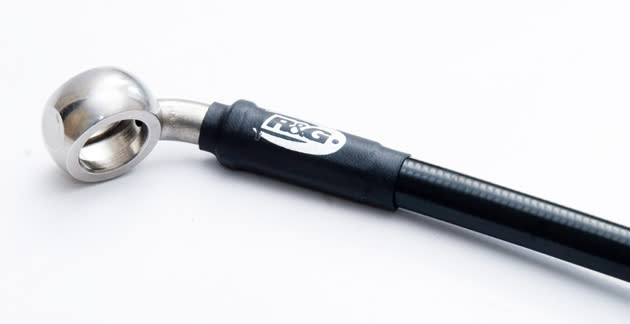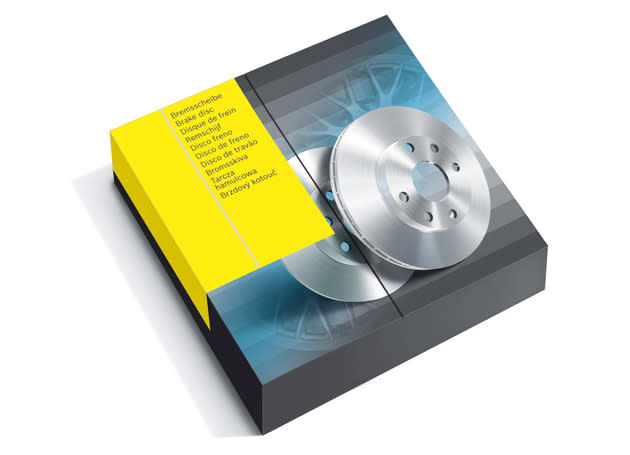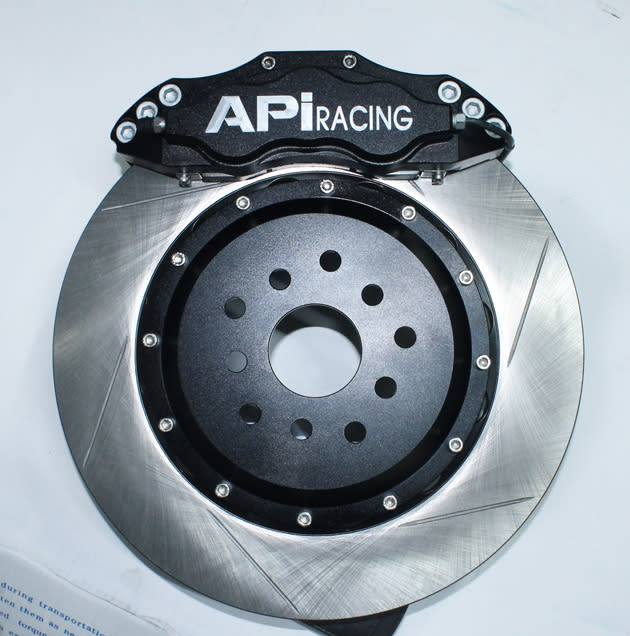Up the stopping power!
For anyone who experienced the terror of a braking hard to avoid an accident, it serves as a memory that more braking power is never a bad thing. But why are stock brakes so blah when the time comes when stopping power is needed? Here's why.
Manufacturers often seek the cheapest suppliers they can find to make each of the components that bolt together to form a complete car. These parts meet a manufacturer's requirements for performance, for example, no manufacturer wants to give consumers a brake pad which smoothers the rims with tons of brake dust every week. So it's a weird trade-off, easy-to-maintain dustless brake pads for less braking power - and that's where the upgrades begin.
Brake Pads (Good)
The first step to squeezing more bite out of the stock brakes is to upgrade the brake pads. One step up would be sport brake pads with a higher temperature rating. This also raises the bar for brake fade resistance. A brake pad manufacturer should offer at least three different brake pads types that range from street, sport and race. Be careful if you choose to go for the highest-spec pads, they are mostly made from a compound which wears out both the pad and the rotors quicker than other kinds of brake pads.
SSBH - Stainless Steel Brake Hose (Better)
You would have heard of this term being thrown around a lot in the performance circles, but for good reason. We all go gaga over stainless steel brake hoses for a very good reason, they get rid of the spongy feeling in the brake pedal, plus they do not expand as much under heavy braking as the stock rubber brake hoses do. A good set of SSBH comes with a polyurethane jacket to prevent any stuff thrown up from the road from nibbling away at the steel braids.
Rotors (Best)
Changing your stock rotors will yield better performance from upgraded brake pads and SSBH. A good manufacturer will have a good selection of rotors to choose from. One of the most commonly asked question is... drilled or slotted?
Even though both claim to have the same heat dissipation properties, the biggest downside of using drilled rotors on your vehicle is that holes weaken the rotors. There is no “but” about it. Hence, slotted rotors are the way to go if you're really concerned about getting the maximum performance. That said though, if you still prefer the looks of drilled rotors, try to get one that has not been extensively drilled out.
Big Brake Kits (BBK) (Ultimate)
This big-ticket brake upgrade might even necessitate a set of new wheels to accommodate the larger braking equipment. Larger pads and larger brake discs make for shorter stopping distances. In addition, the increased surface area allows for greater heat dispersal.
Gone are the days when one had to figure out how to mount a bigger caliper. Today, manufacturers offer direct bolt in kits that take the hassle away from installations. Big brake kits often come with calipers that have four pistons in front and two in the rear (in comparison, stock brakes usually come with a single piston) Take note if you are going for a bigger, six piston and above caliper, ensure that the brake master cylinder is capable of delivering the extra fluid that more pistons naturally require.
Do I need a rear disc conversion?
A front-disc/rear-drum configuration has no performance advantages, only cost-savings. It is important to consider that most of the braking work is done by front brakes. However, a four-disc setup does have the advantage in delivering better braking performance in slippery conditions, plus they have a better heat-shedding ability.
Cars with rear discs also tend to stop quicker because of a more rear-biased braking setup which is naturally anti-nosedive. Rear disc conversions are highly recommended if you are a regular trackday warrior who practices a lot of trail-braking. Do take note that you might require a new proportioning valve to correct the imbalance in braking as drum-brake equipped cars are set for more rear-bias from the factory, changing to discs might upset the brake balance.






